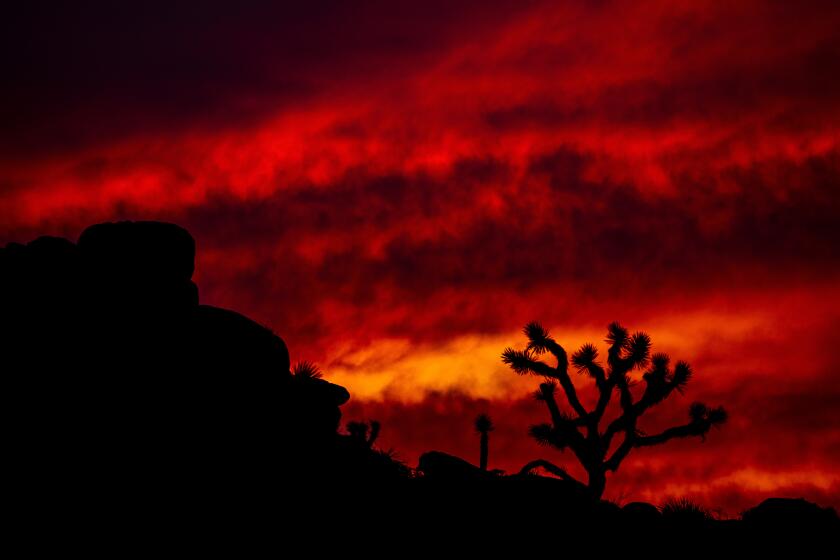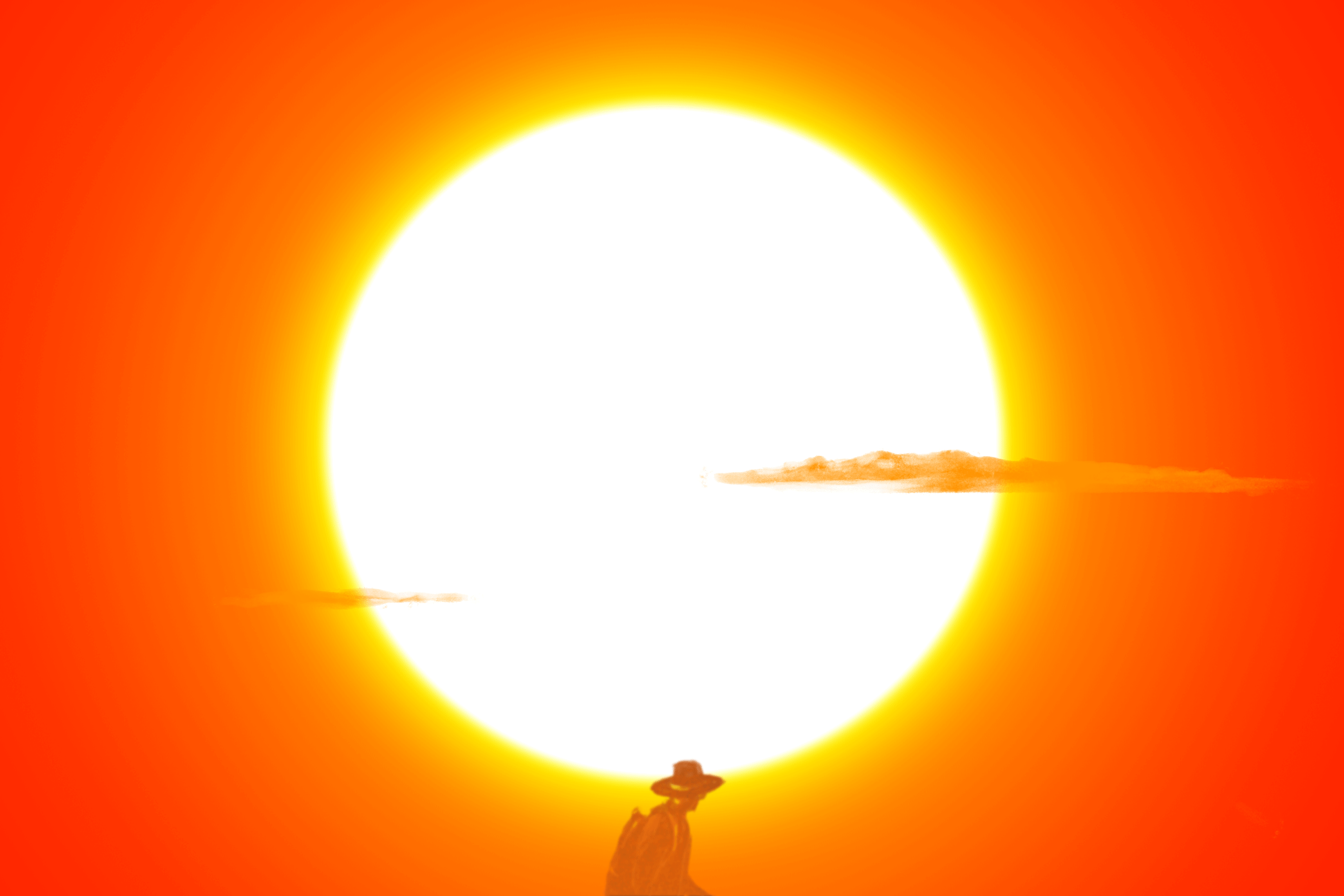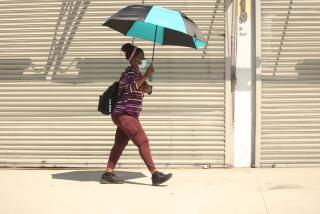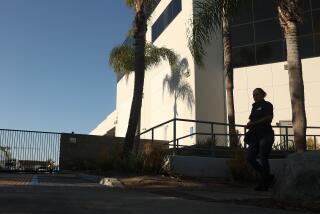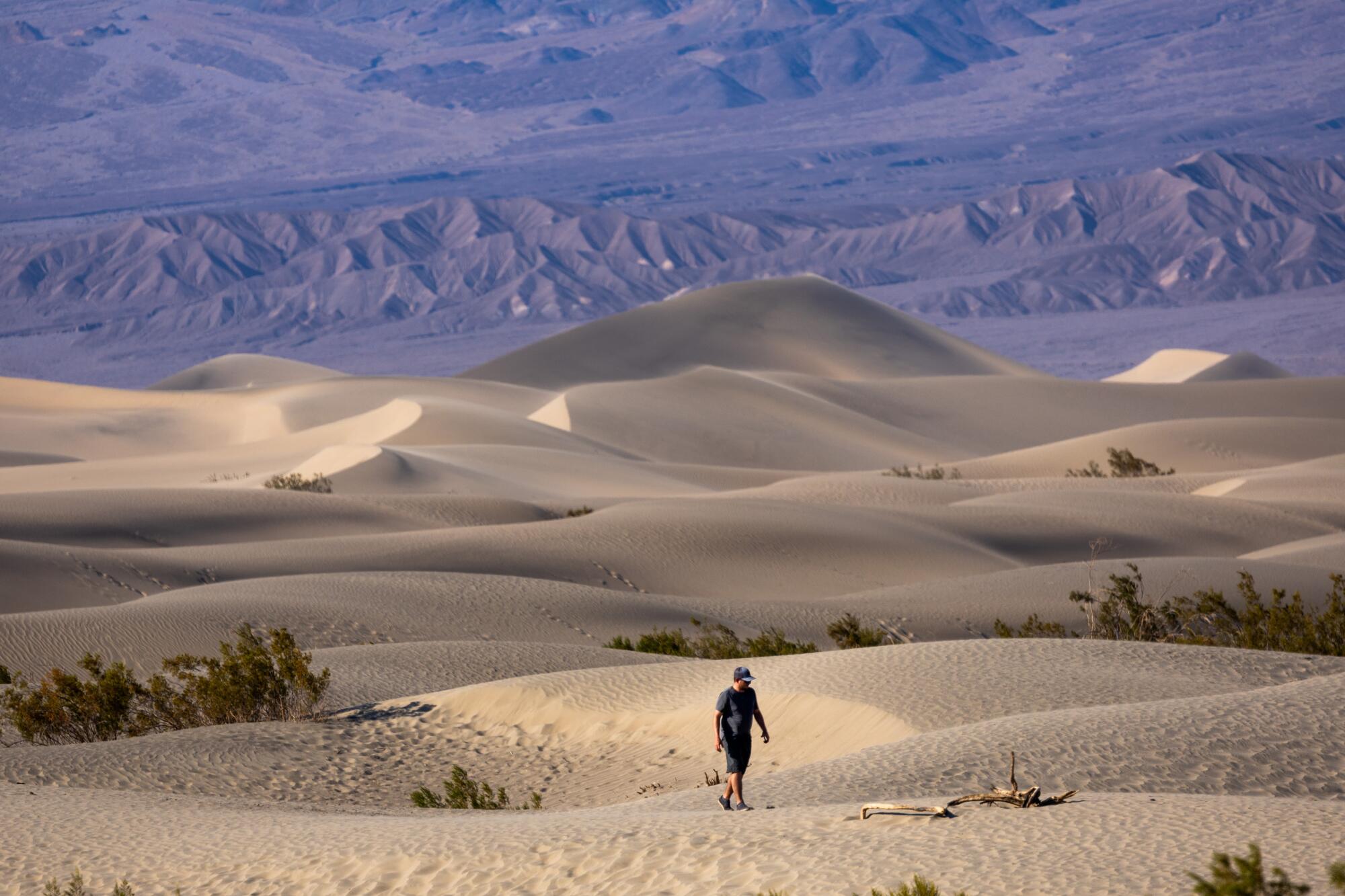
FURNACE CREEK, Calif. — As temperatures swelled to 128 degrees, Death Valley National Park rangers got a call that a group of six motorcyclists were in distress. All available medics rushed to the scene, and rangers dispatched the park’s two ambulances.
It was an “all-hands-on-deck call,” said Spencer Solomon, Death Valley National Park’s emergency medical coordinator. The superheated air was too thin for an emergency helicopter to respond, but the team requested mutual aid from nearby fire departments.
They arrived Saturday to find one motorcyclist unresponsive, and medics labored unsuccessfully to resuscitate him. Another rider who had fallen unconscious was loaded into an ambulance, where emergency medical technicians attempted to rapidly cool the victim with ice as they transported him to an intensive care unit in Las Vegas. The four other motorcyclists were treated at the site and released.
With record heat blanketing California and much of the West recently, Death Valley has hit at least 125 degrees every day since the Fourth of July, and that streak isn’t likely to change until the weekend, according to the National Weather Service.
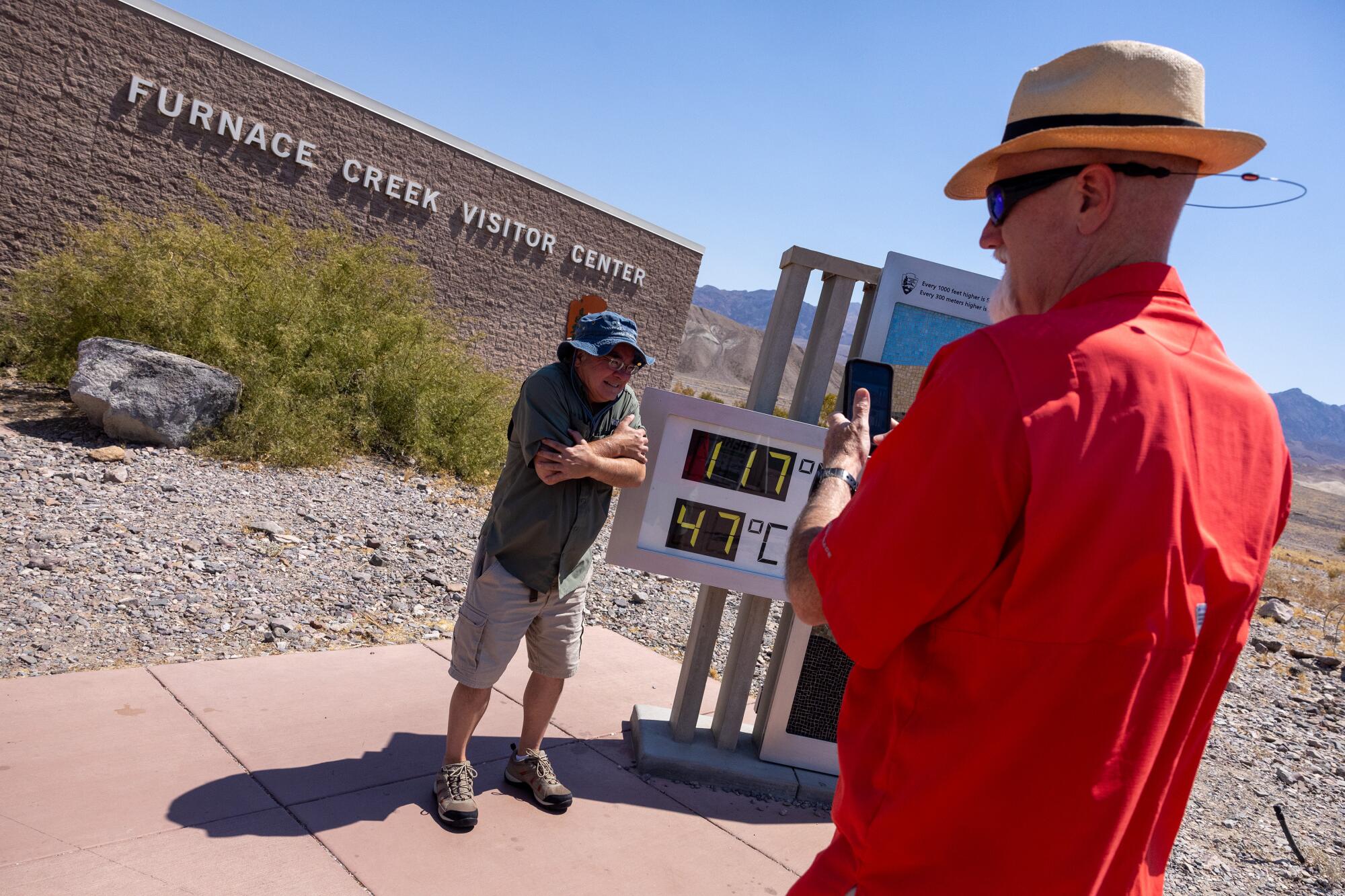
Extreme heat is both one of Death Valley’s greatest intrigues and its most serious safety concern. It’s not uncommon for a few people to die in the park from heatstroke in any given summer.
Located 200 feet below sea level and surrounded by steep, towering mountain ranges that trap heat, the valley is consistently among the hottest places on Earth.
In the summer, international travelers often schedule their trips without considering the weather. (All six of the men who fell victim to extreme temperatures near Badwater Basin on Saturday were from Germany.)
But even Southern California residents who are familiar with Death Valley’s hellish reputation will trek to the park just to experience the otherworldly heat.
The Jurupa Valley City Planning Commission has requested further study on a development that potentially threatens one of the oldest plants in the world.
“In L.A., people said, ‘No, don’t go out there; you’re crazy,’” said Nick Van Schaick, who visited the park early this week. He had spent the night in the nearby town of Beatty, Nev., then drove into the park at the crack of dawn Tuesday. “I don’t know. … There’s something compelling about this landscape.”
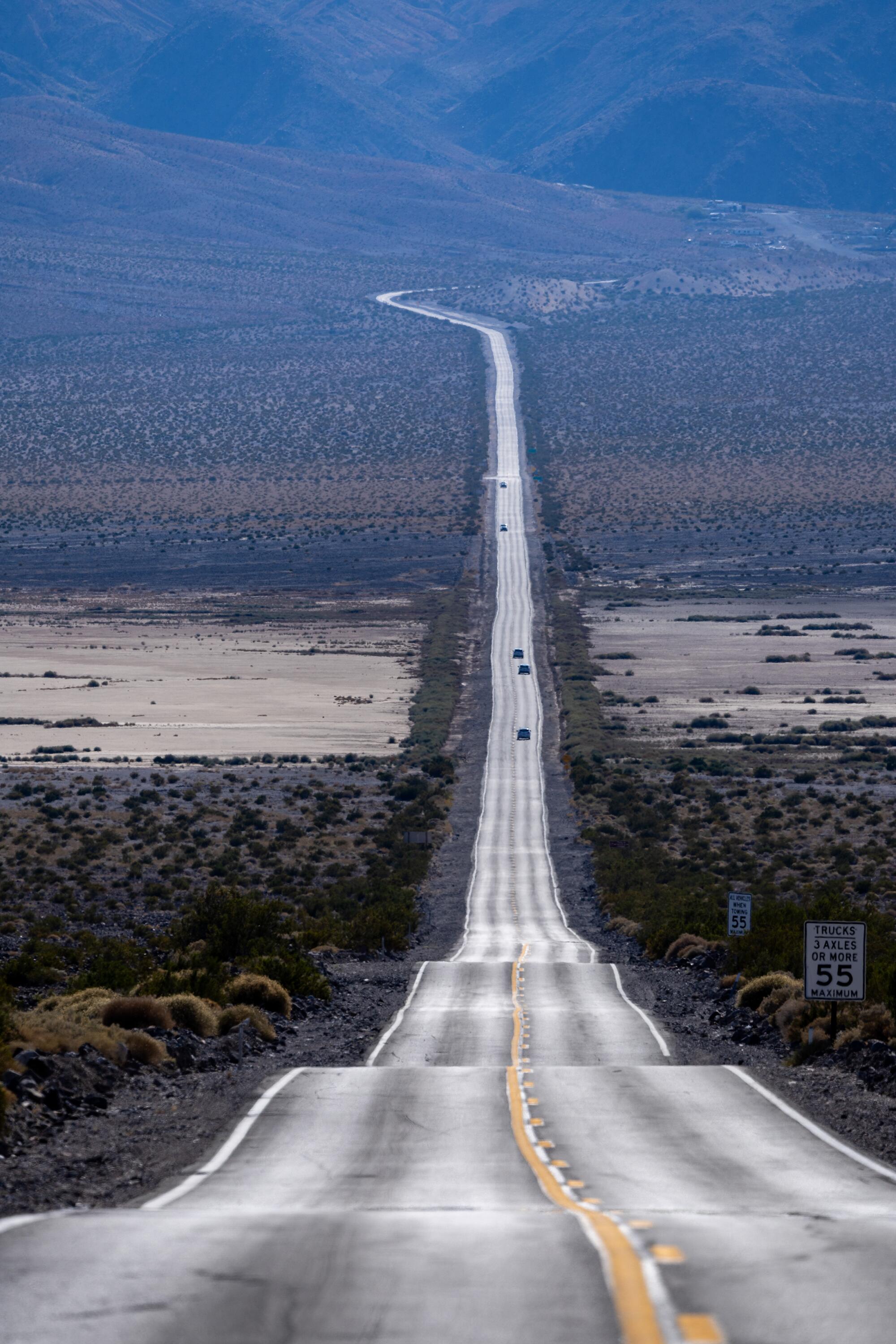
Virtually all heat-related deaths are preventable, experts say, but what makes heat so dangerous is that it sneaks up on its victims.
The risk of Death Valley’s heat seems painfully obvious. It’s hard to miss the dozens of “Heat kills” signs throughout the park, and stepping out of a car there for the first time feels like sticking your face in an opened oven. Within seconds, your eyes begin to burn and your lips crack. Your skin feels completely dry — even though you’re sweating profusely, the sweat evaporates almost instantaneously.
But one of the first symptoms people experience as their core temperature begins to rise is confusion, which can inhibit a person’s ability to recognize that something is wrong or understand how to save themselves.
Studies have also shown that although almost everyone understands how to prevent heat illness, too few take action to protect themselves. That’s in part because many think they are uniquely able to handle the heat when in fact they are not. In 2021, a Death Valley visitor died from heat just days after another visitor had died on the same trail.
It’s a one-two punch. Hikers ignore the symptoms of heat exhaustion because they’re excited to hike or have nowhere else to go, said Bill Hanson, an instructor for Wilderness Medical Associates International and a flight paramedic in central Texas who specializes in heat-related emergencies. Then, “when a person reaches a pretty profound state of heat exhaustion — which by itself is not a lethal condition — and they’re still in that environment, the likelihood they’ll make the right decisions and reverse the process ... is reduced because they have a reduced ability to make good decisions at all.”
One of the reasons that humans are quickly overcome by extreme heat is that there’s only one route for heat to exit the body. Blood carries heat from our core to our skin, and, when the breeze is too hot to carry heat away from us, the body can release it only through the evaporation of sweat. Any of that sweat that drips to the ground or is wiped off the face is a missed opportunity to cool down.
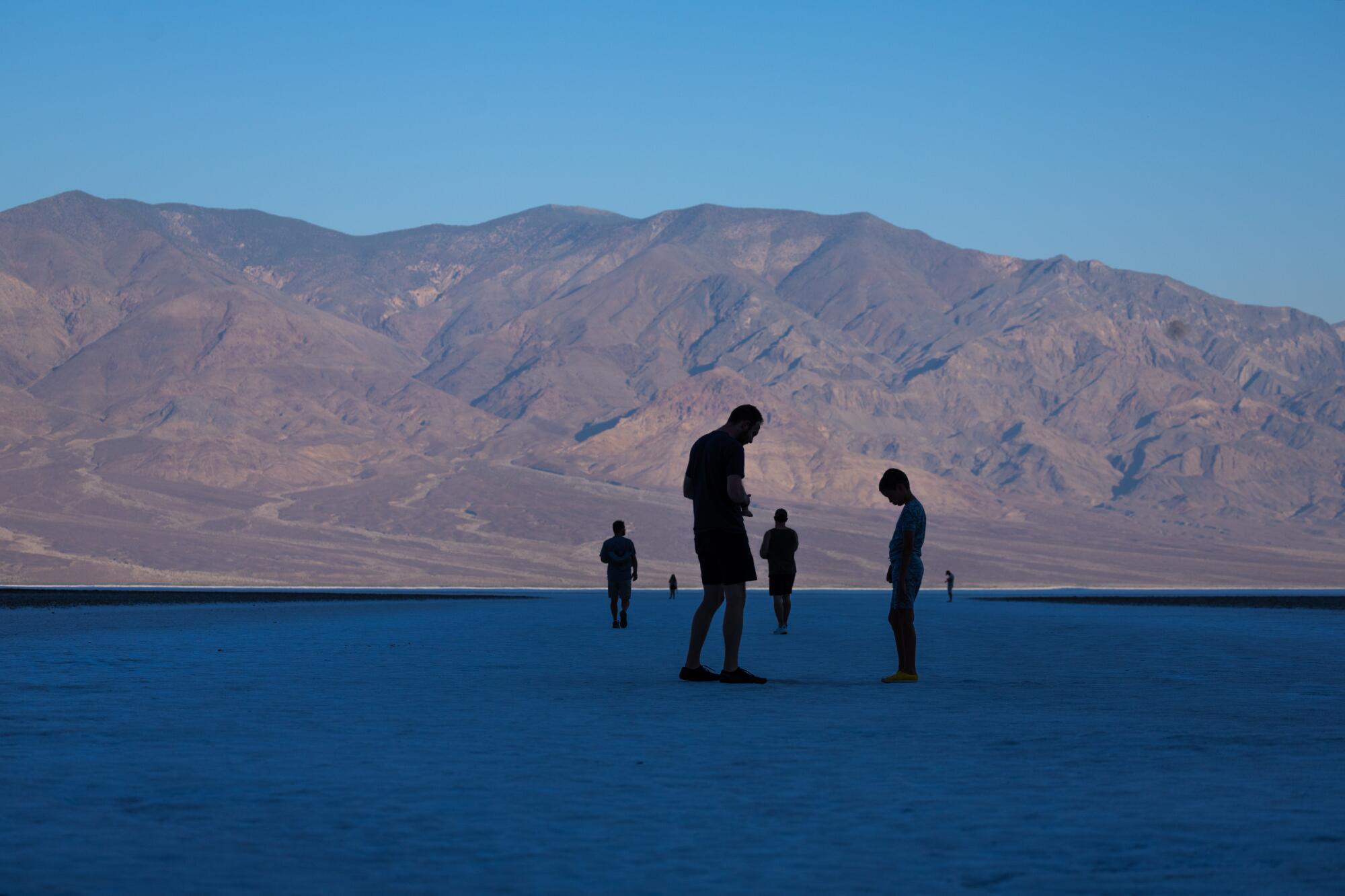
In Death Valley, the air is so dry that sweat evaporates very easily, unlike in humid climates where the atmosphere contains more moisture. With profuse sweating, however, dehydration comes quickly. The park recommends visitors do their best to replenish lost water and drink at least a gallon a day if they’re spending time doing any physical activity outside.
But sweating and constant hydration will work only to a point.
“A 130-degree environment ... there’s going to be a limited shelf life on a human body’s ability to exist in that environment without some technological support,” Hanson said.
As Joshua trees struggle with climate change, habitat loss and increasingly intense wildfires, California is scrambling to complete a conservation plan.
Because of this, the park says to never hike after 10 a.m. during periods of extreme heat and recommends never straying more than five minutes away from the nearest air conditioning, whether it be in a car or building.
In the heat, sticking in groups can also save lives. While it might be difficult for a confused heat illness victim to recognize the symptoms or remember how to save themselves, friends can spot problems. In general, if you struggle to do anything that is normally easy for you — physically or mentally — stop to rest and seek cooler conditions immediately.
Muscle cramps are often the first sign the body is struggling to stay cool. They’re probably caused by a toxic concoction of dehydration, muscle fatigue and a lack of electrolytes like sodium, which are essential for chauffeuring water and nutrients throughout the body. Cramps are a sign that the body’s process for dumping heat is under stress.
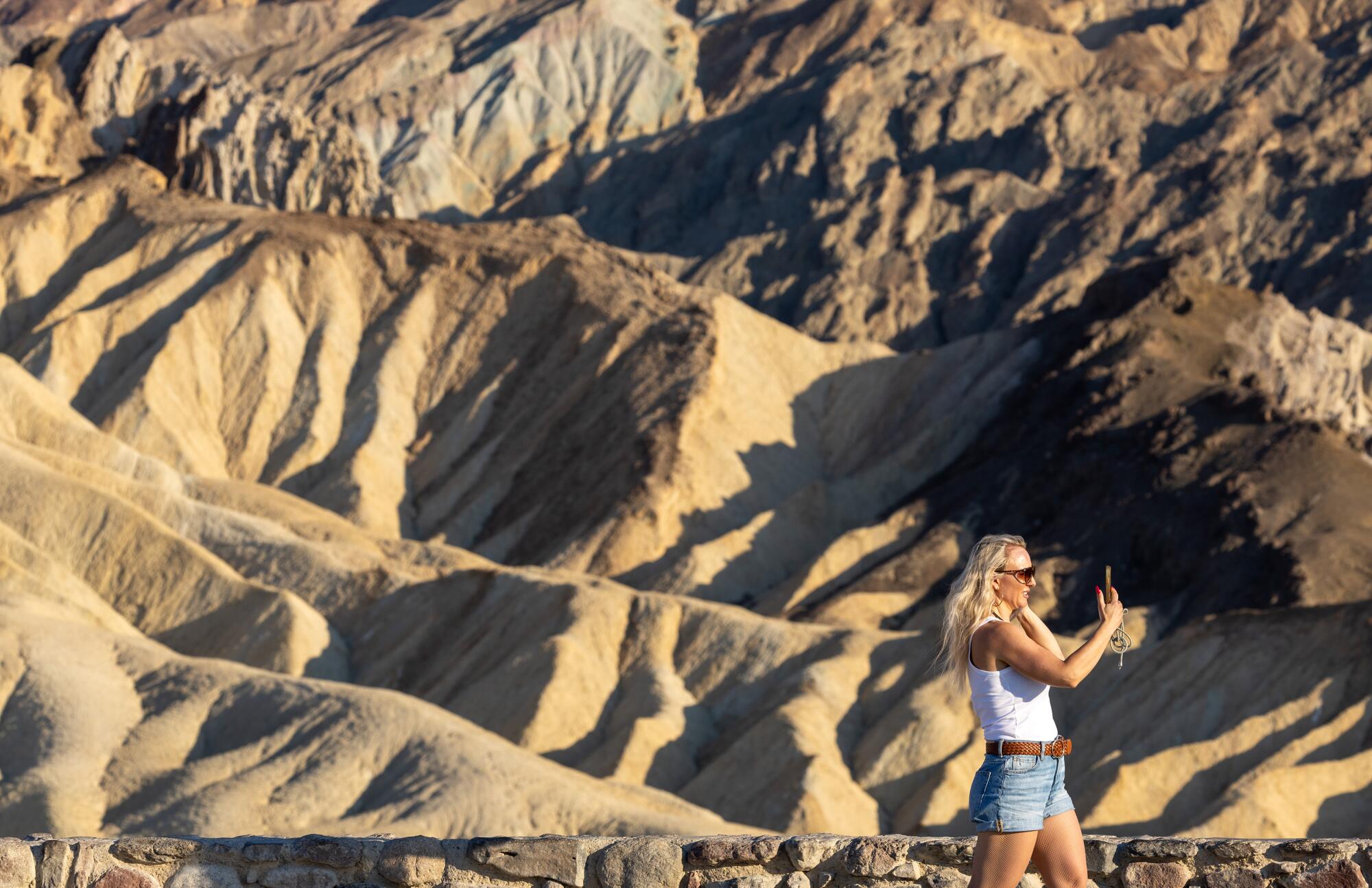
As the body struggles, heat exhaustion starts to set in. The brain, heart and other organs become tired from working to maintain the body’s typical temperature of 98 degrees. As the body passes 101 degrees, victims can start experiencing dizziness, confusion and headaches. It’s not uncommon for them to vomit, feel weak or even faint.
As the body passes 104 degrees, the entire central nervous system — responsible for regulating heat in the first place — can no longer handle the stress of the high temperatures. It starts to shut down. The victim might get so confused and disoriented that they no longer make sense. They might not even be able to communicate. They can start to have seizures and fall into a coma.
“To me, as a park medic, if you’re unresponsive, you’re going to the hospital,” Solomon said, “because your brain is essentially cooking.”
At this point, the heat has done irreversible damage that can leave the victim disabled for years to come. If internal temperatures don’t fall quickly, death becomes a very real possibility. Organs can fail within hours, killing the victim, even after their temperature starts to drop.
Heat illness can come on within just minutes or take hours to develop. “There’s kind of a weird phenomenon where there’s two times of day where we’ll get 911 calls for people who have fallen ill” due to heat sickness, Solomon said.
One is in the middle of the afternoon, when the heat is at its worst. The other is near 11 p.m. — visitors will feel OK during the day, but get increasingly dehydrated as they continue to exert themselves. “Then, they check into their hotel room and fall ill,” Solomon said.
In some extreme cases, heatstroke can overwhelm a person so fast that muscle cramps and other symptoms of heat exhaustion don’t have time to show. The Death Valley emergency response team typically gets about two or three heat illness calls per week in the summer, with visitors experiencing symptoms across the spectrum from mild fatigue to loss of consciousness.
Heatstroke experts overwhelmingly agree on the most effective treatment: cooling the patient as fast as possible.
“The key to survival is getting their body temperature under 104 within 30 minutes of the presentation of the condition,” said Douglas Casa, a professor of kinesiology at the University of Connecticut and the chief executive of the Korey Stringer Institute, a leading voice in treating heatstrokes. “It’s 100% survivability if you do that, which is amazing because there’s not too many life-threatening emergencies in the world that have 100% survivability if treated correctly.”
A visit to Death Valley National Park has profound consequences for a veteran of extreme temperature. “I thought I knew heat.”
The fastest way to cool a patient is a cool ice bath, experts say. Hanson said his team in Texas will fly an ice bath on a helicopter and cool the victim in the middle of the desert until their temperature stabilizes before the medics even transport them.
However, in Death Valley, getting an ice bath to victims can be nearly impossible. The hot air is so thin that the team can’t fly helicopters. Instead, they bring a body bag and cool the victim inside with ice and cool towels as they’re transported via ambulance.
Although emergencies are regular, the park says they are preventable, and if people follow park guidance, they can experience the heat safely.
“It really is a reason why some people come to visit — because this is one of the few places on Earth where you can feel what that level of heat feels like,” said supervisory park ranger Jennette Jurado. “It’s our job as park rangers to do our very best to make sure people can have these experiences and then go home safely at the end of the day and remember these experiences.”
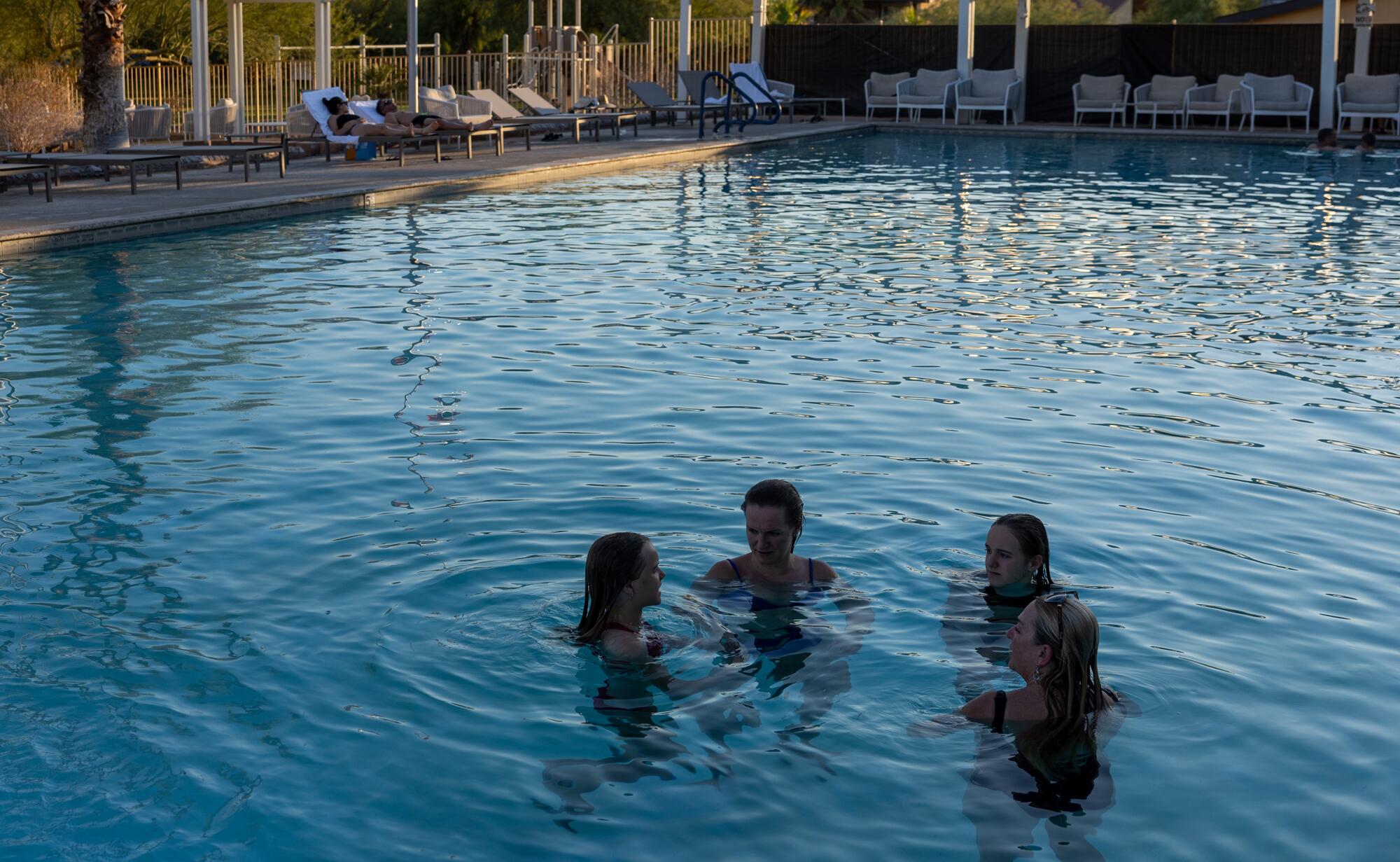
For Jurado, a safe visit looks like taking refuge in air conditioning during the hottest parts of the day and experiencing the heat in short five-minute intervals. The vast majority of visitors take this approach. If they hike at all, it’s early in the morning, and the car never leaves their sight. The rest of the day, they spend hanging at the hotel or by the pool — or they leave the park.
Although it might be possible for someone to — wrongly — convince themselves that a 90-degree heat wave in the city won’t affect them personally, it’s much harder to do that in a Death Valley heat wave.
Ironically, this makes Jurado worry more about cooler days in the park, when visitors may not be most on guard. When hikers died within days of each other a few years back, it was an unseasonably cool 105 degrees in the park.
“It’s that level of heat where people are like, ‘Oh, it’s not Death Valley hot, I can hike longer — I can take more risks,’” Jurado said.

